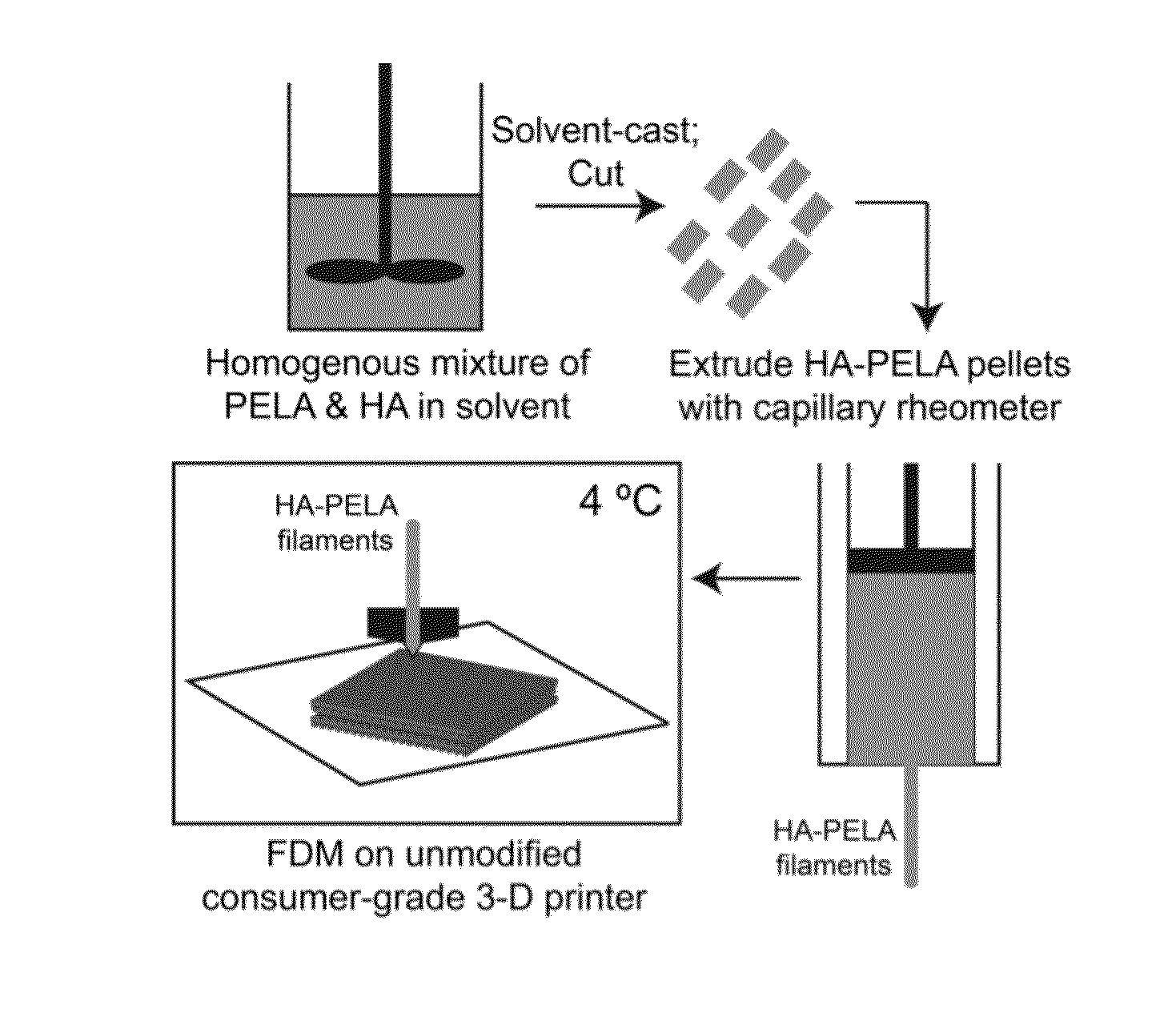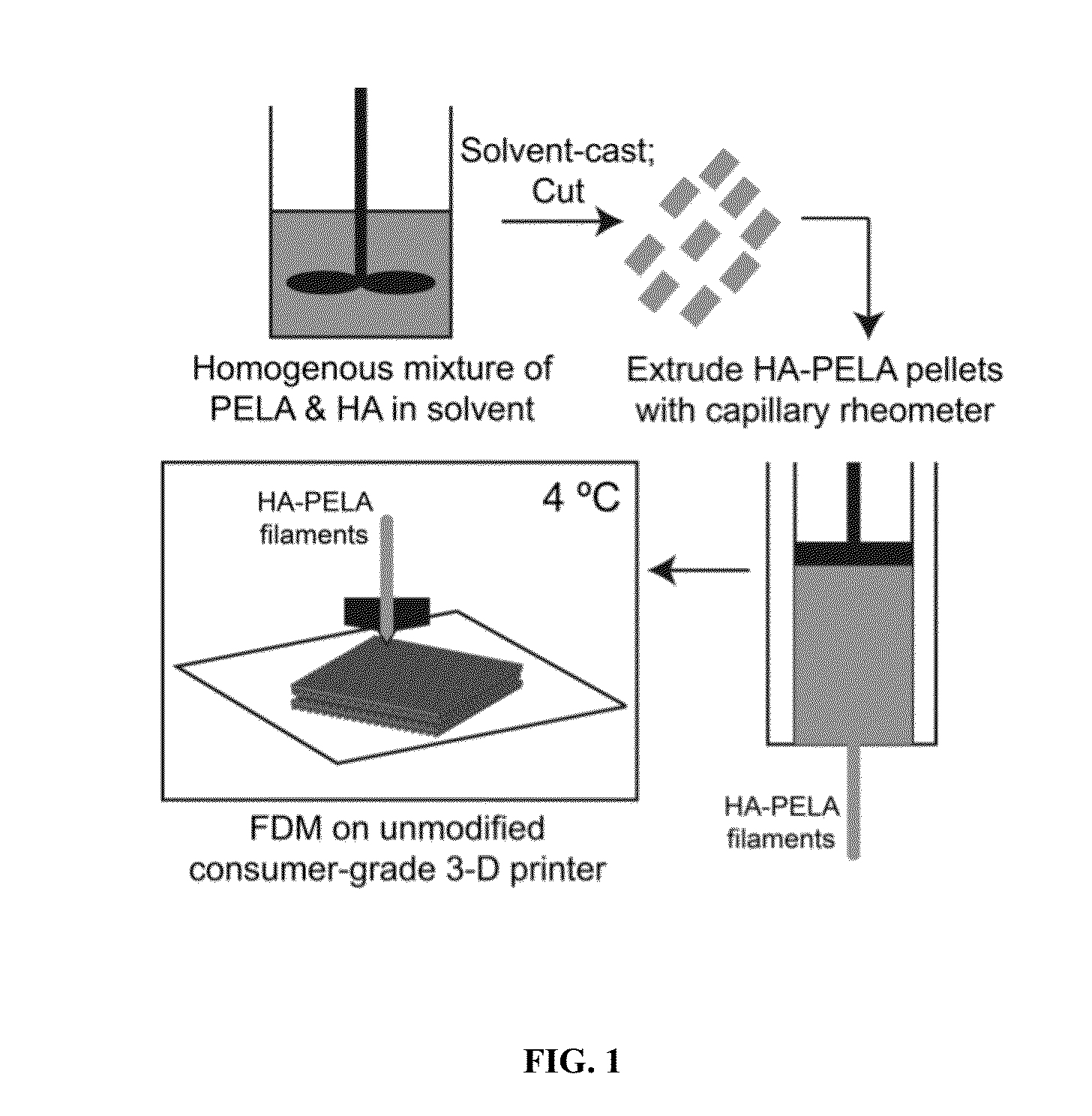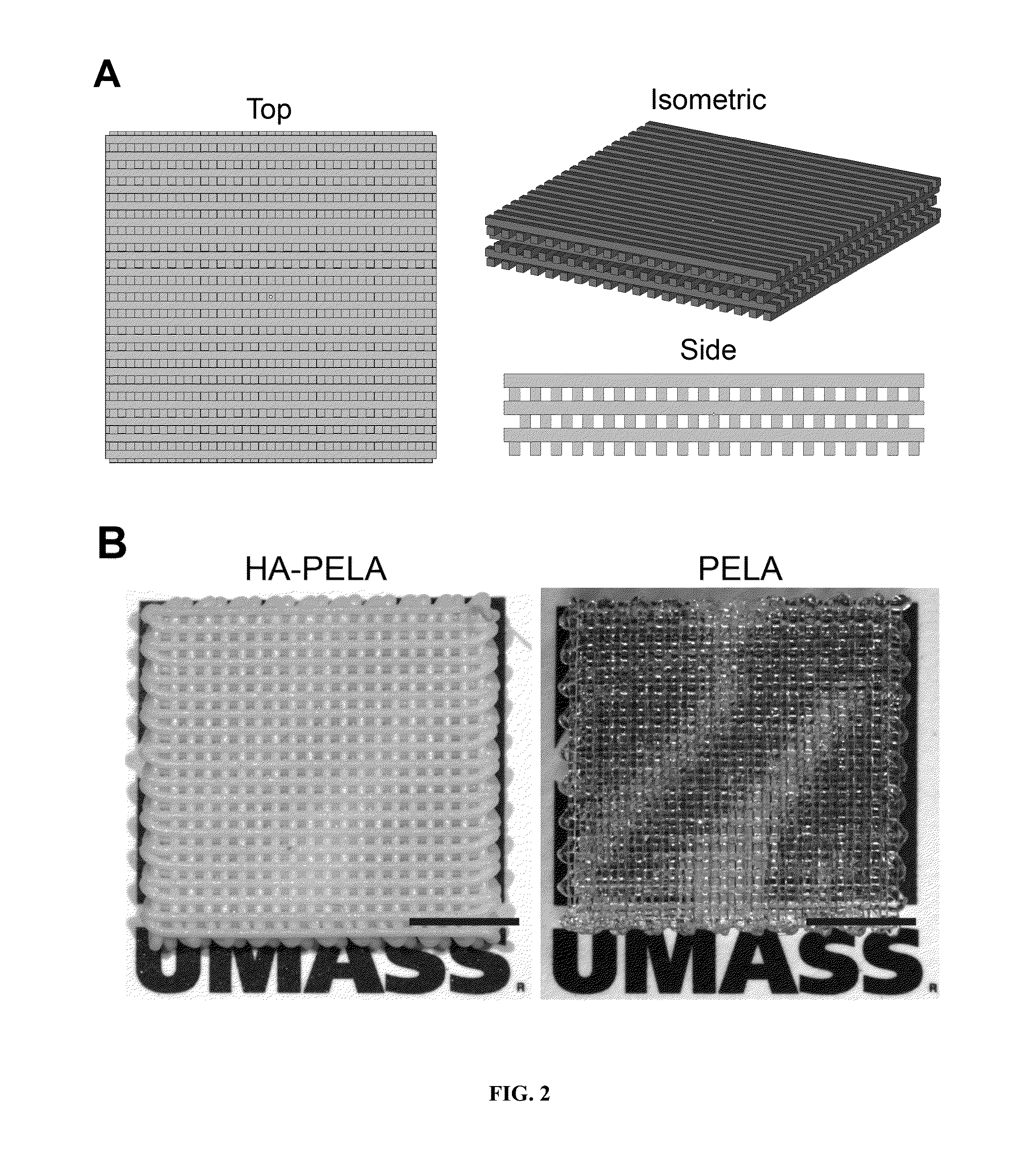Elastomeric and degradable polymer scaffolds and high-mineral content polymer composites, and in vivo applications thereof
a polymer and amphiphilic polymer technology, applied in the field of polymer compositions, can solve the problems of limited thickness and porosity, high stiffness and brittleness of ha alone, and inability to meet broad orthopedic applications, and achieve the effects of inhibiting attachment, rapid prototyping of biphasic pela/ha-pela, and easy support of cellular attachmen
- Summary
- Abstract
- Description
- Claims
- Application Information
AI Technical Summary
Benefits of technology
Problems solved by technology
Method used
Image
Examples
examples
Fabrication and Characterization of PELA and HA-PELA Scaffolds
[0073]The manufacturing process for 3-D PELA, HA-PELA, and PELA / HA-PELA biphasic scaffolds is depicted in FIG. 1. Briefly, PELA / HA blends were solvent cast into films, extruded into filaments through a capillary rheometer, and then rapid prototyped into 3-D scaffolds by FDM in a sub-ambient printing environment.
[0074]The fused deposition modeling (FDM) process consists of feeding a thermoplastic polymer filament through a heated nozzle, guided by software instructions converted from the CAD model, and depositing thin rods of polymer layer by layer that fuse with one another at their contact points. An unmodified consumer-grade 3-D printer, MakerBot® Replicator™ 2X, was used to fabricate the scaffolds. The only “customization” required for printing PELA and HA-PELA polymers were (1) the preparation of PELA and HA-PELA filaments to feed the 3-D printer, and (2) the identification of appropriate environmental and printing no...
PUM
| Property | Measurement | Unit |
|---|---|---|
| temperature | aaaaa | aaaaa |
| temperature | aaaaa | aaaaa |
| temperatures | aaaaa | aaaaa |
Abstract
Description
Claims
Application Information
 Login to View More
Login to View More - R&D
- Intellectual Property
- Life Sciences
- Materials
- Tech Scout
- Unparalleled Data Quality
- Higher Quality Content
- 60% Fewer Hallucinations
Browse by: Latest US Patents, China's latest patents, Technical Efficacy Thesaurus, Application Domain, Technology Topic, Popular Technical Reports.
© 2025 PatSnap. All rights reserved.Legal|Privacy policy|Modern Slavery Act Transparency Statement|Sitemap|About US| Contact US: help@patsnap.com



